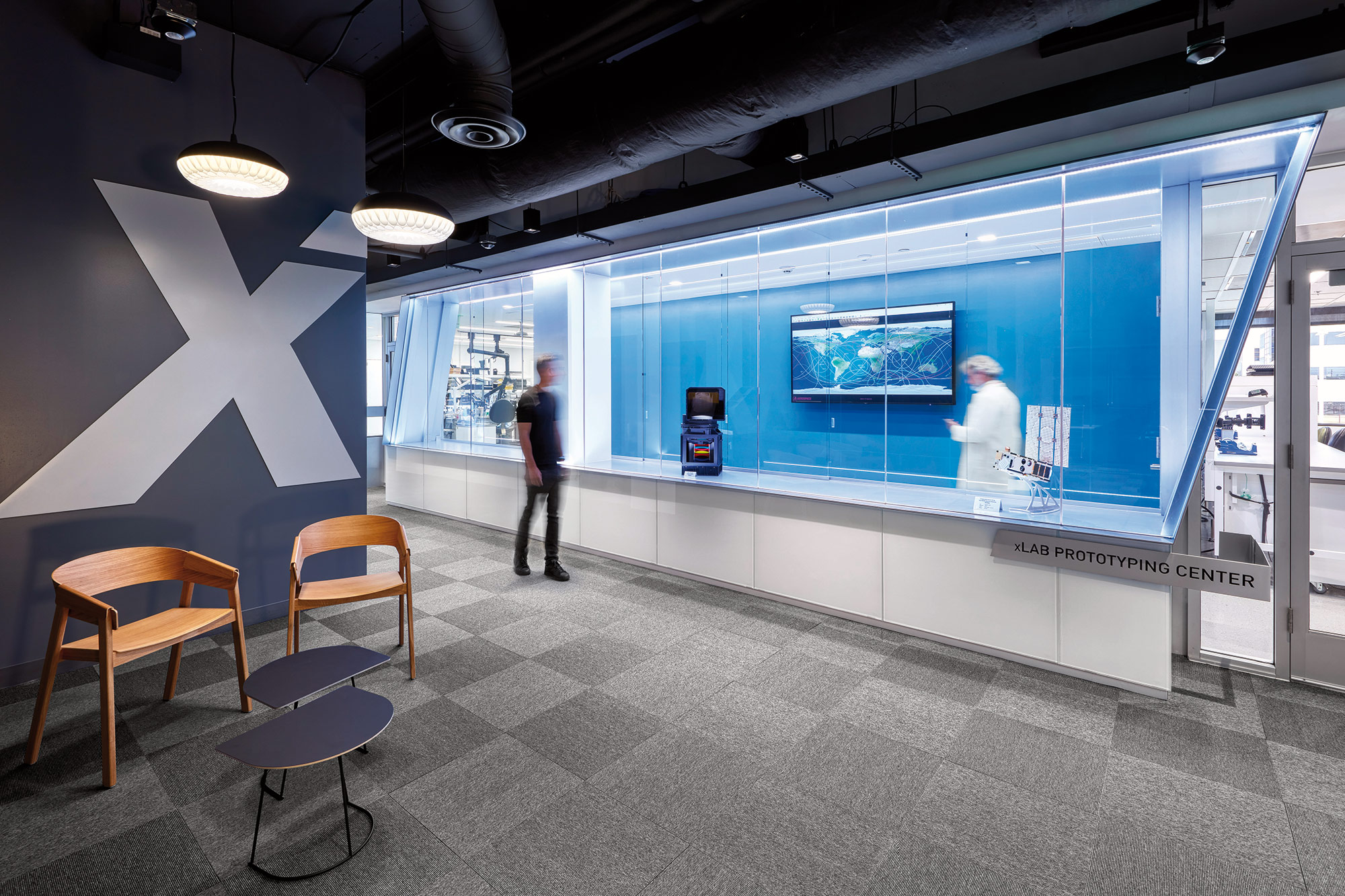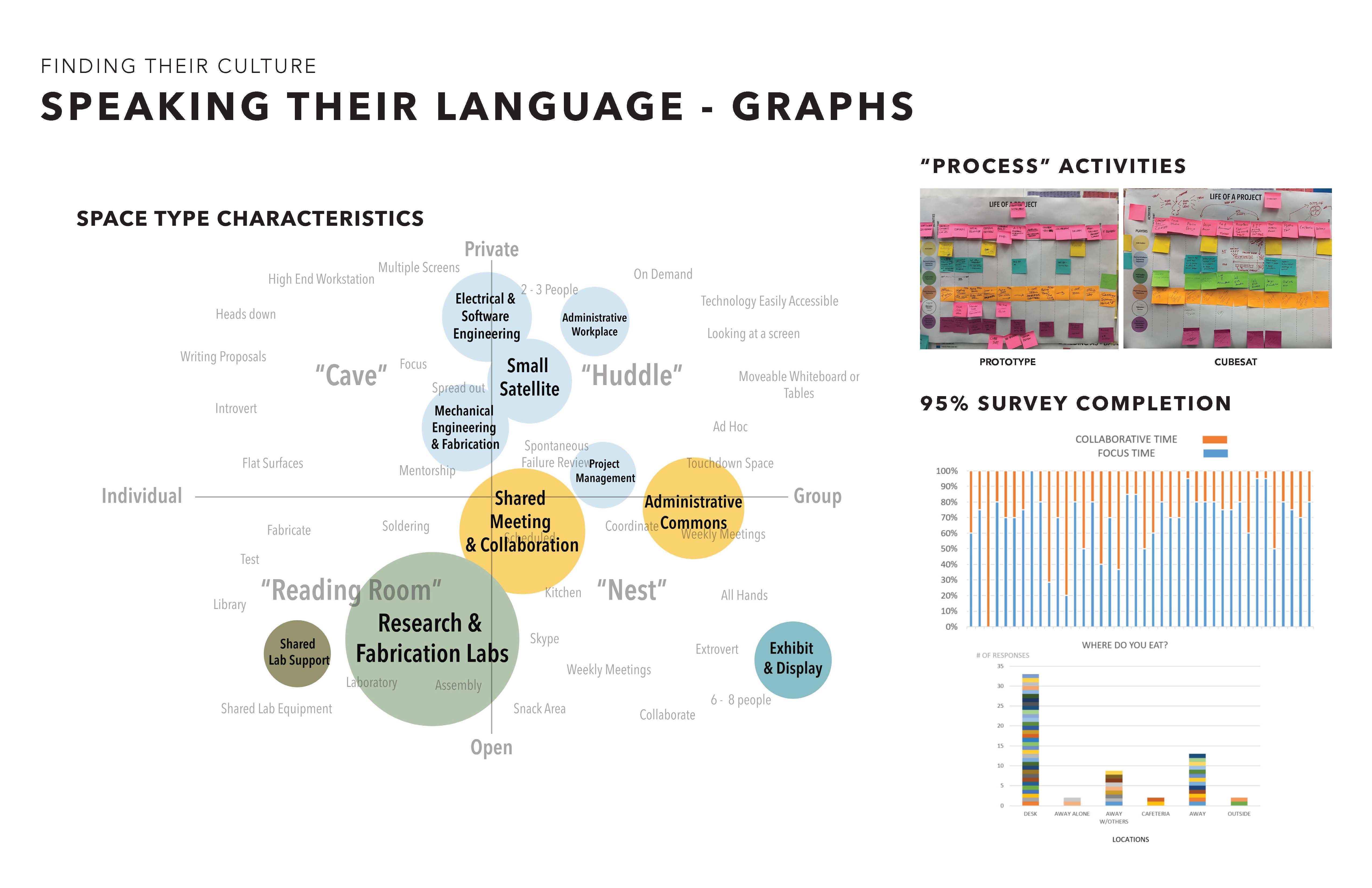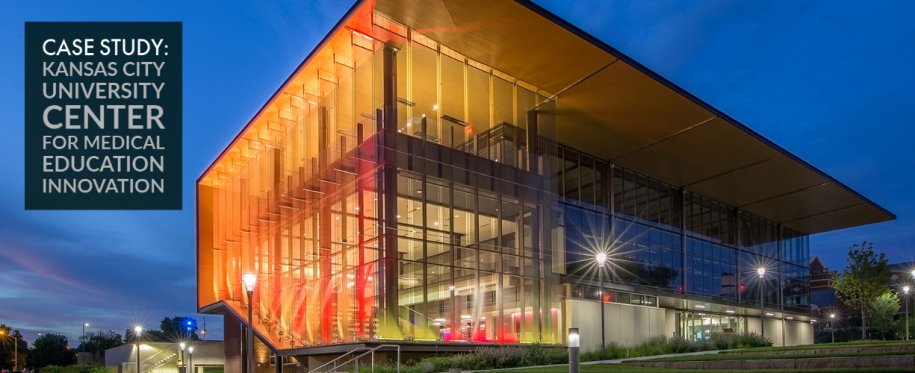Cultural Change Management Informs Design

By Andrew Labov
CO Architects used participatory workshops to lead a confidential engineering client through a cultural change management process, facilitating its transition from enclosed, cloistered offices to a collaborative open plan environment that integrates two previously separated teams responsible for the design and production of small satellites (cubesats) and custom payloads (prototypes). Not only did the office transform as a functional space for its users, but the design also allowed the public a space to understand and appreciate the work. The entire facility serves to showcase design and production activities to visitors, with large windows into the labs and curated displays organized along a “tour route” culminating in a prototype design center, where live feeds of satellite imagery are projected from its mission operations center.
CO led the cultural change management by initiating the first step – observe and understand the organization’s culture. Then, together CO and the client determined which values best aligned with the organization’s strategy and structure. The next step was to make a plan with action steps. CO facilitated this process – finding their culture, developing specialized labs and ultimately, creating a personalized design for this new office.

Organizational Approach
This change management process began at the outset of programming and was expressed in the organization of the user groups. Rather than organizing them by department, as illustrated in the client’s organization chart, users were organized into interdisciplinary groups (or “crews”), each representing project types and specialized spaces.
Process Overview
Programming began with a Visioning Workshop, followed by crew meetings, during which the program and the characteristics of each space in the program were defined with increasing detail. This exercise was concurrent with numerous test-fits of the program that were narrowed down to two schemes and associated cost models.
Visioning Workshop
Project leadership participated in a series of interactive exercises, where they defined attributes of their organization and goals for the project. An essential part of the change management process was providing a forum for project stakeholders to express the values and attributes of the organization that had made it successful, and to challenge design team with developing solutions that would express and support those positive qualities.

Questionnaires
Prior to the programming workshops, crews responded to questions and word association exercises providing the design team with additional context and deeper understanding of their motivations and needs with respect to:
Crew Workshops
Each of the interdisciplinary crews participated in interactive exercises that were fundamental to the design team’s development of an associated space program.
Life of a Project: Activities and workflows for the design and fabrication of small satellites and prototypes.
Space Characteristics: Spaces and activities aggregated into four basic archetypes supporting a spectrum of individual to group activities, in open and enclosed environments.
Space Program
These crew meetings, interactive exercises and test fits within the existing building resulted in a space program that prioritized elements identified as critical to the project’s success, including the Prototype Design Center and Research Laboratories, and recognized the importance of providing a compliment of shared meeting and collaboration spaces to compensate for the transition from enclosed offices to open plan workstations.
The transition to an open office was well received, a testament to the diligence of CO's team in facilitating a cultural change management process.

